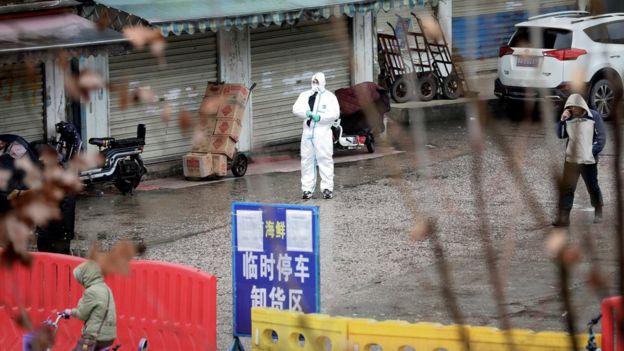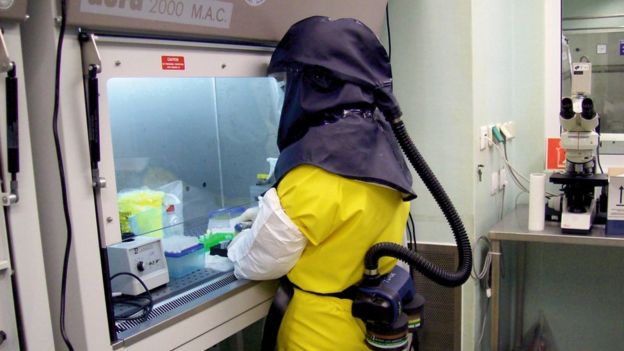Provenance of the Wuhan Novel Coronavirus
"We have hosted their building engineers [Chinese scientists] to work with ours to pass along best practices for the safe operations of their facility, and we have had post-doctoral scientists complete our rigorous biosafety training program."
James W.LeDuc, director, Galveston National Laboratory, University of Texas
"[It is] plausible [but] highly unlikely [the virus was leaked from the Wuhan BSL-4 laboratory]."
"It is difficult to either prove or disprove."
"Even more so if you consider the most likely scenario, which is not nefarious but ... an accidental lab exposure where that person may have been asymptomatic or had mild illness, so no one would even have known."
Darryl Falzarano, microbiologist, University of Saskatchewan
 |
| A number of early cases in the pandemic were linked to the Wuhan Seafood Market Reuters |
These scientists are referring to China's sole high-security infectious-disease laboratory located in Wuhan, China, a lab known for its sometimes controversial research on pathogens. Now, at a time when conspiracy theories rage on the Internet, claiming that the laboratory, not the Wuhan seafood 'wet market' was the source of the novel coronavirus emergence that has invaded the world, additional information has come to light, which has not solved the riddle of the COVID provenance but provides thoughtful insights.
A report dating from 2018 when Washington was informed by U.S. diplomats in China of safety concerns at the Wuhan Institute of Virology laboratory has recently been revealed. Leading to suspicions that the virus had accidentally slipped out of the laboratory. Despite which, Dr.David Kelvin, a virologist who works with researchers in China, admits from his Dalhousie University lab, that "Its possible it (a laboratory leak) could happen", for there have been earlier "escapes", not only in China but elsewhere as well.
"The question is not if such escapes will result in a major civilian outbreak, but rather what the pathogen will be and how such an escape may be contained."There is little question that SARS-CoV-2 originated in Wuhan, a zoonotic infection leaping from animal to a human host. Of the early cases in Wuhan many were people who had visited a live-animal market. Yet there were others infected with the novel coronavirus who had never been to the market. And there is the coincidence of the biosafety level-4 laboratory, the highest-grade facility for the handling of infectious diseases in China located in Wuhan not very far from the market in question.
"If indeed it can be contained at all."
Dr.Martin Furmanski, pathologist, medical historian
No evidence exists that the virus was bio-engineered and the general consensus among scientists is that the virus resulted from natural evolution and not human manipulation. Despite which reports arose that a natural coronavirus was under study at the lab and had escaped. The issue of sub-standard safety at the lab came under scrutiny when U.S. diplomats wrote: "The new lab has a serious shortage of appropriately trained technicians and investigators needed to safely operate this high-containment laboratory."
And thee is another, lower-level Wuhan Center for Disease Control lab in the picture as well as the BSL-4 establishment, located even closer to the live-animal market. "If the virus escaped, nobody could predict the trajectory", said one virologist of a joint Wuhan-U.S. experiment that took place in 2014 when a SARS-like coronavirus from bats was manipulated to infect mice as a "gain of function" project. Designed to anticipate possible epidemic viruses with a view to helping in the development of vaccines in advance.
 |
| Laboratories like this one in Hungary follow a system of standards with four levels. These levels are based on the precautions needed to handle different pathogens EPA |
Labels: Biosafety Laboratory Level 4, China, Live-Animal Market, Novel Coronavirus, Wuhan

<< Home